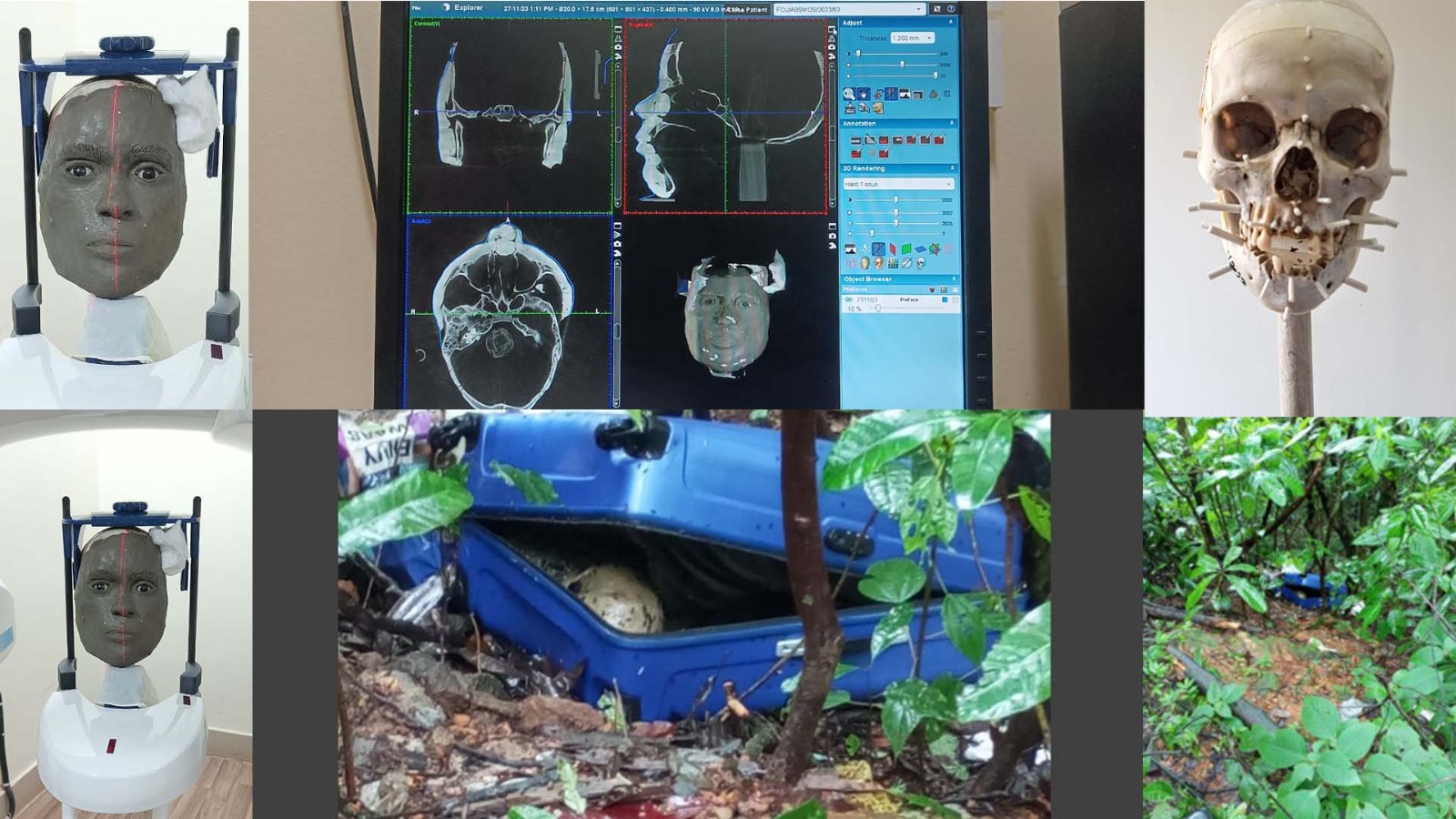Case of woman's body found in trolley bag in Kodagu forest: From zero leads to one clue that the police can count on.

Facial recontruction of murdered woman's body dumped in suitcase in Kodagu forest
An unidentified woman found murdered in a forested area on the interstate highway connecting Kodagu in Karnataka with Thalassery in Kerala’s Kannur district could have been from Northeast India, perhaps Assam, the police said.
The assumption about her home state was made after the Regional Forensic Science Laboratory (RFSL) in Mangaluru reconstructed her facial features using Artificial Intelligence (AI). The face had Mongoloid features.
The woman’s body, in an advanced decomposing state, was found in a blue American Tourister trolley bag discarded by the road near the Makootam-Perumbadi Pass in Virajpet police limits on 18 September this year.
Superintendent of Police in Kodagu Ramarajan K told South First that based on the dental examination and ossification tests, the woman was aged between 25 and 30, and she was around 145 cm tall.
The ossification test helps in determining the age of a person based on the “degree of fusion of bone” by x-raying a few bones.
“The RFSL in Mangaluru employed AI to reconstruct the facial image using the victim’s skull and it revealed that she had Mongoloid features. We suspect that the victim was from Northeast, especially Assam, as a lot of people, mostly women, from that state come to Karnataka and Kodagu to work in the estates,” he said.
The police were also probing a case of a woman from Assam, who had gone missing from Bengaluru. “The Kodagu police have collected the DNA samples from the missing woman’s mother and it will be matched with the samples collected from the body. However, there is a discrepancy in the age,” the officer said.
The missing Assamese woman was aged 23, whereas the dead woman was in her late 20s. “So the match is highly unlikely,” Ramarajan said, adding that the police were collecting details of missing Northeast women fitting this age bracket.
“We will also issue a notice with the woman’s re-created image along with a description of her dress and wait for people to come up with information,” the officer said.
The body was almost totally decomposed when a few passersby found the trolley bag and informed the police and Forest Department officials. The investigators felt the bag was dumped at the spot at least two weeks before it was noticed.
The police also recovered a red churidar top and a yellow bottom, but there were no innerwear or ornaments on the body. A postmortem examination was conducted on 19 September at the General Hospital in Virajpet.
Samples of skull linings, hair, molar teeth, and the femur (thigh bone) were collected for ascertaining the age, and other forensic analyses. Since the body was highly decomposed, investigators could not find any tattoos, moles, or any other marks that would have helped in identifying the deceased.
Soon after the postmortem, the police with the help of a few municipality members in Virajpet, buried the body.
The police sent the unique product identification code of the trolley bag and wrote to the company’s legal team to find details about where it was sold and, if possible, information about the buyer.
However, the company responded, saying that it was unable to get the details of the customer. The police then sent special teams to Kodagu, Virajpet, and also to Kannur to look into cases of missing women matching the deceased’s description.
After the burial, the police felt the woman’s facial features could be reconstructed using AI.
Virajpet Rural Circle inspector BS Shivarudra and Sub-Inspector Manjunath contacted a senior official, Ravindra, at the RFSL, who confirmed that facial image reconstruction was possible using AI if the victim’s skull was available.
After getting the approval of their senior officers and legal sanction, the police exhumed the body in the presence of the Tehsildar and the District Health Officer on 6 November.
The skull was sent to the RFSL, where the facial image was reconstructed. The RFSL’s report to the police concluded that the victim had Mongoloid features.
The Kodagu district police would soon issue a notice with the colour-enhanced facial image of the deceased to gather information from the general public and to bring her killers to book.

May 09, 2024

May 08, 2024

May 07, 2024

May 05, 2024

May 05, 2024

May 04, 2024